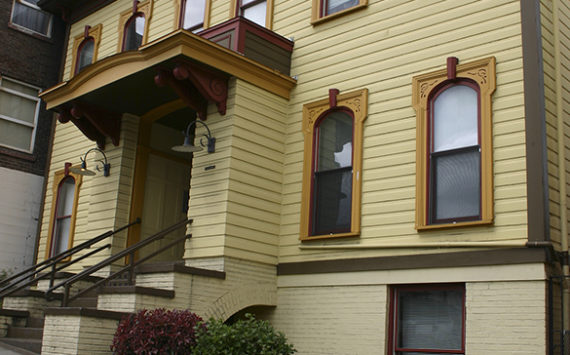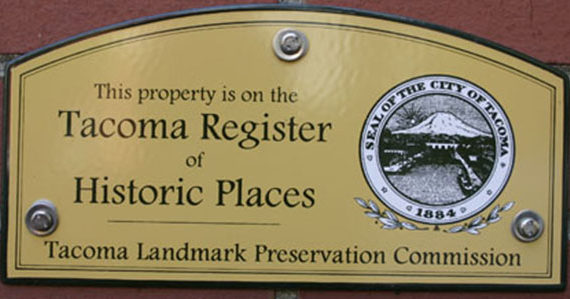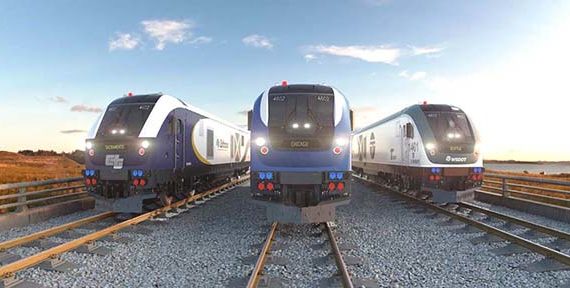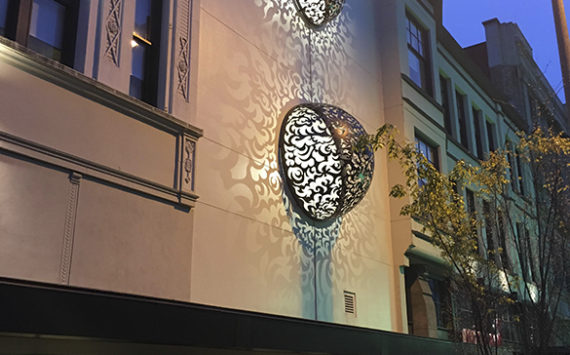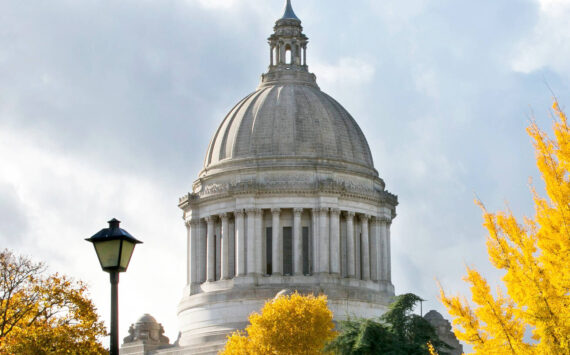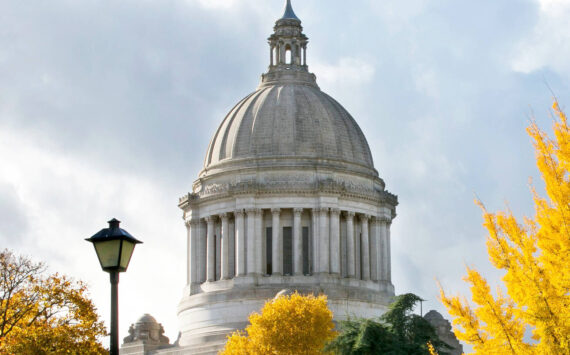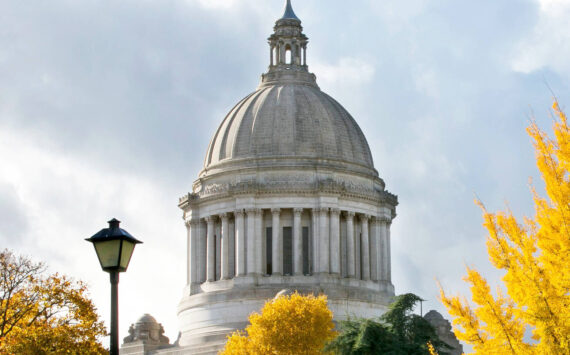The City of Tacoma’s Landmarks Preservation Commission (LPC) is scheduled April 22 to hold a public hearing on a nomination to place the 1890 University-Union Club building on the city’s register of historic places.
It’s another step in a process that began Feb. 6, when a local preservation advocacy group nominated the building.
On March 11, the LPC agreed the building meets the criteria required for placing it on the local register. The LPC is expected to make a final vote on the nomination later this spring. If the commission approves the nomination, it will be forwarded to City Council for the final determination.
Still, the nomination faces one significant hurdle — the building’s owner does not fully support the effort.
During the LPC’s March 11 meeting, attorney Doug Kiger spoke on behalf of the building’s owner, David Smith, and Smith’s daughter, Leah Caruthers. Smith lives in the building. He recently experienced a stroke and lost the ability to speak.
“[The nomination] did come as a surprise to the family,” said Kiger. “In a sense, it’s a compliment. But it is unfortunate the family wasn’t approached prior to the nomination. The family feels bad about that.
“The family has mixed feelings,” he added. “They’re not behind the nomination at this point.” According to Kiger, his client has a “great connection” to the building. Kiger told commissioners that one reason the building has been on the market for nearly two years is that the family is trying to find a buyer who values the building’s historic significance. “They don’t want to sell it to someone who would tear it down,” said Kiger. “The family is looking for an owner that will treat this property the way it needs to be treated.”
Commissioner Fred King asked Kiger why the family opposed the nomination but appreciated its historic significance.
Kiger said his client was concerned the landmark status might be an impediment for any potential buyer unfamiliar with how the landmarks status might affect the property. “The family feels it may defer potential purchasers and they may go away,” he said. “It would be much easier to sell if the purchaser was more involved in this process.”
Aleta Benedicto, an associate broker with Williams Properties LLC, which is marketing the building for sale, said the family plans to vacate the building due to Smith’s declining health. “For this to come up now is just another issue to deal with,” she said. Benedicto recommended that if the city was concerned about the building, it should make the purchase. The building was put up for sale in 2007 for $3.5 million. Today it is listed for $2.87 million.
“The family would be willing to take a good deal off the purchase price,” she added.
A SAFEGUARD AGAINST POSSIBLE DEMOLITION
Still, according to Brett Santhuff, Vice President of Historic Tacoma’s board of directors, and a group of residents who live near the 119-year-old building, landmarking the structure would provide an extra layer of protection.
“Architecturally and culturally, the University-Union Club is a significant property and there were many of us who were surprised that the building had escaped listing on any register,” said Santhuff in a statement released Feb. 25. “Historic Tacoma thought a nomination overdue but also an appropriate means to both safeguard the building and attract a buyer interested in its preservation.”
Santhuff, who wrote the 171-page nomination, added that the building, located at 539 Broadway and on a bluff overlooking Commencement Bay, lacked demolition protection and community members feared the property might be purchased by someone who valued the land more than the history.
On Feb. 11, Santhuff sent a letter to Smith notifying him of Historic Tacoma’s nomincation. According to city rules, anyone can nominate a building to the city’s historic register. But most nominations are made by the property owner or with the property owner’s cooperation.
“We hope you see this as a wonderful opportunity to maximize the value of the structure,” wrote Santhuff. This is the first time Historic Tacoma has directly submitted a nomination to the landmarks commission.
The criteria for nomination state the building must be 50 years old or older at the time of nomination, and “retain enough integrity of location, design, setting, materials, workmanship, feeling, and association to convey its historical, cultural, or architectural significance.”
In addition, as many as six requirements can be met for any nomination. According to the LPC’s vote in March, the University-Union Club meets five of the six requirements:
— The building is associated with events that have made a significant contribution to the broad patterns of our history;
— The building is associated with the lives of persons significant in the city’s past;
— The building has the distinctive characteristics of a type, period, or method of construction, or represents the work of a master, or possesses high artistic values, or represents a significant and distinguishable entity whose components may lack individual distinction;
— The building is part of, adjacent to, or related to an existing or proposed historic district, square, park, or other distinctive area which should be redeveloped or preserved according to a plan based on a historic, cultural, or architectural motif;
— The building, owing to its unique location or singular physical characteristics, represents an established and familiar visual feature of the neighborhood or City.
A LONG HISTORY IN TACOMA
During the March 11 meeting, Santhuff provided a PowerPoint presentation highlighting to commissioners the building’s historic significance. The Union Club was co-founded in 1888 by Tacoma businessman George Browne. Browne wanted a gentlemen’s club where “men of business could dine, meet and mingle, or merely relax and read their papers.” Theodore Hosmer sold the land to the Union Club in 1888. Two years later, Portland, Ore., architects Whidden and Lewis completed the Colonial Revival building that would serve as the club’s headquarters. Its members included titans of the timber and railroad industries. The cost to purchase land, construct the building, and furnish the interior cost $40,000. Eighty-four members paid an initial $250 membership fee.
Its membership roster read like a ‘who’s-who’ of Tacoma history: Hosmer, who incorporated the village of New Tacoma, operated the Tacoma Land Company, and was a charter member of the Washington State Historical Society; William R. Rust, owner of the Tacoma Milling and Smelting Company; Allen C. Mason, who coined the phrase “City of Destiny” for Tacoma; Tacoma hotelier William B. Blackwell; and Chauncey W. Griggs, founder of the St. Paul & Tacoma Lumber Company.
The club hosted U. S. President Howard Taft, railroad financier Henry Villard, U. S. Speaker of the House Joe Cannon, and Notre Dame football coach Knute Rockne. In 1906, a similar organization known as the University Club formed and operated out of a former mansion (now demolished) a block away. In 1936, the University and Union Clubs united and shared the building until 1985.
Recently, building resident and owner Smith operated a restaurant and bar in the building, and leased it to nightclub and billiards operators. Santhuff praised Smith and his family for purchasing and maintaining the building over the years. “I think they have done a service in putting care and investment into the building,” he said.
The public meeting will be held April 22 at 5:00 p.m. at 728 St. Helens, Tacoma Municipal Building North, Room 16.
